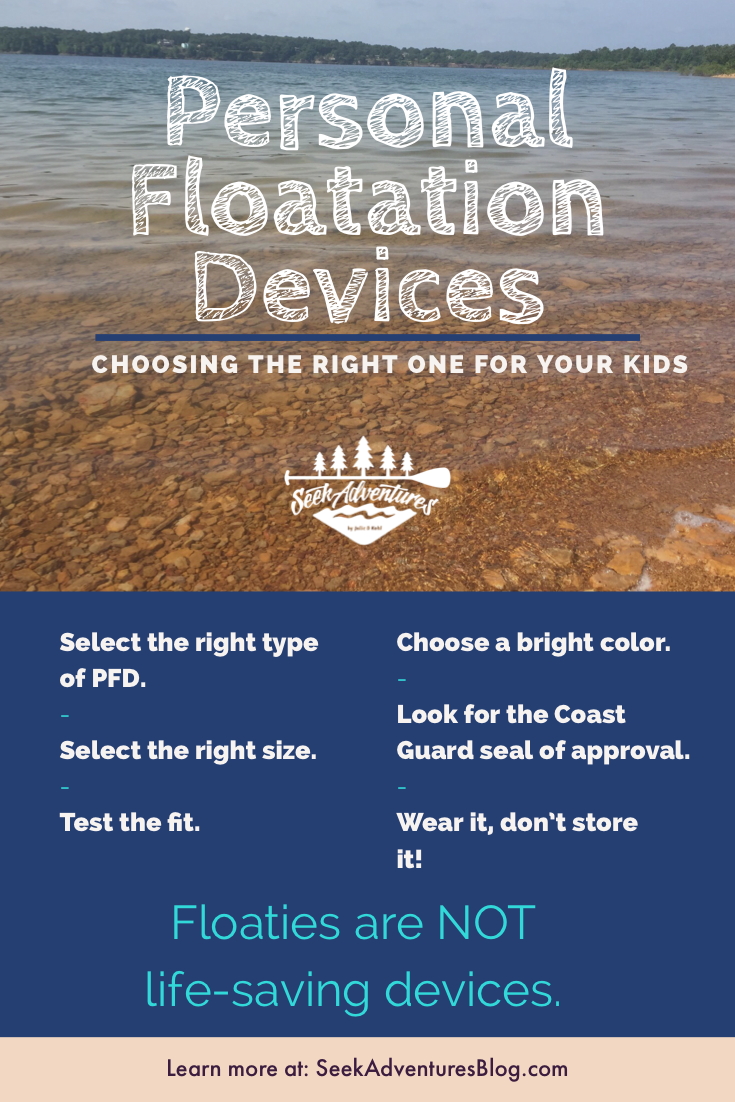Water safety is so paramount and also something that is overlooked by a lot of people. In my post Water Safety Tips for Toddlers and Children, I mentioned the importance of PFDs several times. When you are out on the water, a Personal Floatation Device (PFD) is a necessity. It is probably also the law. I am a firm believer that even adults should wear a PFD at all times when on a boat, but more importantly, children should always wear a PFD. Choosing the right PFD for your child can be a little tricky, so I’ve created this guide to help you understand the types of PFDs available.
Floaties are NOT Life-Saving Devices
One of the most common misconceptions people have is that pool floaties are life-saving devices. They are not. In the picture below is an assortment of common floaties found around a pool or at a beach.
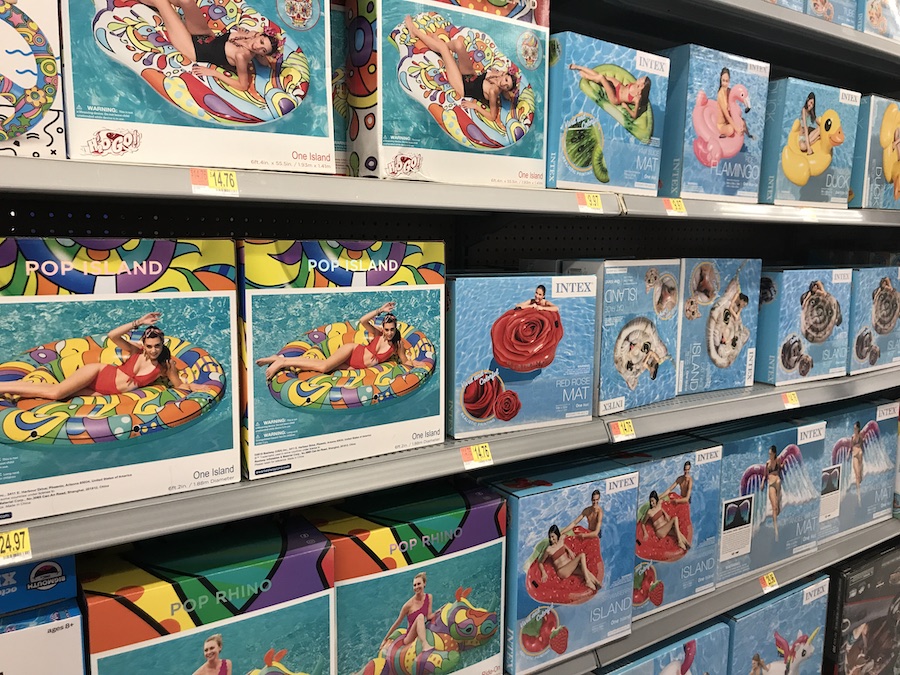
Not a single one of these items is considered a life-saving device, but they often give parents and caregivers a false sense of security. Proper water safety should always be followed, and children should always be supervised when using any of these devices. These devices are considered toys and are not designed to prevent drowning or save a child from a near-drowning.
Arkansas PFD Laws
If you plan to go boating (even canoeing, Paddleboarding, or kayaking), it is important to know and follow your local PFD regulations. They can vary from state to state, so a quick google search can be beneficial.
Here in Arkansas, the law states that:
- All vessels must have a USCG–approved wearable PFD for each person on board.
- All vessels 16-foot and longer must also have a USCG–approved throwable PFD on board.
- All PFDs must be in good and serviceable condition and readily accessible. Wearable PFDs must be of the proper size for the intended wearer. Sizing for PFDs is based on body weight and chest size.
- Children 12 years old and younger must wear a USCG–approved PFD securely fastened to their persons at all times while on any vessel. The only exception is if the child is within the enclosed area of a houseboat or cruiser, or within the area enclosed by railings on a party barge, cruiser, or houseboat, and the vessel is not underway.
- Each person on board a PWC must wear a USCG–approved wearable PFD.
- Each person being towed behind a motorized vessel on water skis, an aquaplane, or another device must wear a USCG–approved PFD.
Types of PFDs
Type I PFD – Off-Shore Life Jacket
These devices are the most likely to turn an unconscious person face up. They are bulky but provide a lot of buoyancy. These are designed for rough and/or remote waters where rescue may be delayed.
Type II PFD – Near-Shore Buoyant Vest
These devices will turn some unconscious wearers face-up in the water. They are designed for general boating activities in calm, inland waters, or where fast-rescue is likely.
Type III PFD – Floatation Aid
These devices are not designed to turn an unconscious person face-up. They provide good support to individuals with some swimming skills.
Type IV PFD – Throwable Device
These devices are meant to be tossed to a conscious person in distress. They are designed to be grasped, not worn.
Type V PFD – Special Use Devices
The devices are typically designed for a specific purpose such as a sailboard harness, deck suit, paddling vest, commercial whitewater vest or float coats. These are only approved when being used for the intended activity. Type V PFDs also include inflatable and hybrid devices.
Think Safe Label
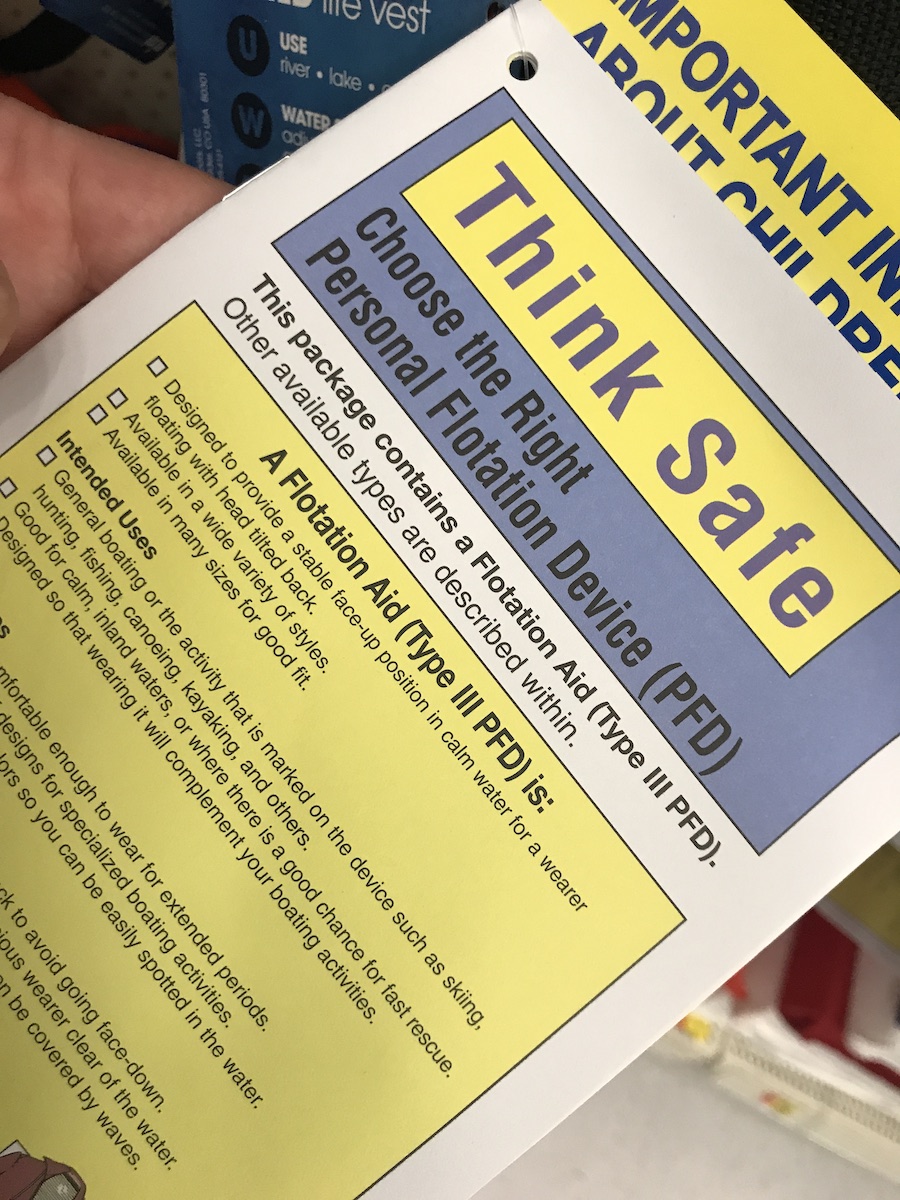
All Coast Guard-approved PFDs should have a Think Safe label affixed to them. This label will clearly state the PFD Type and how it should be used as well as instructions for proper fit. Always make sure you select the best PFD for the activity and skill level of the swimmer. Check out my post Water Safety Tips for Toddlers and Children for more safety tips.
Be Aware of Confusing Labels
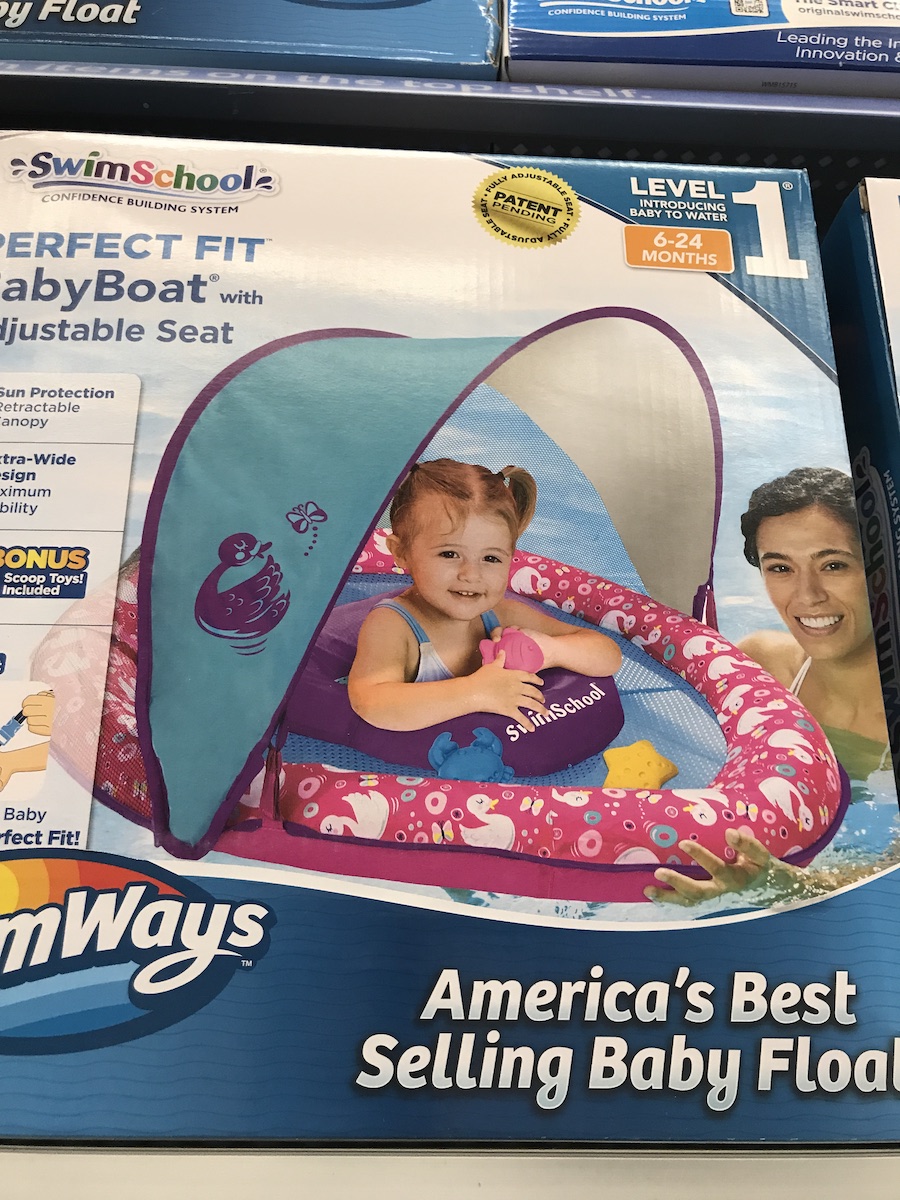
The baby float shown above is a trendy pool toy for infants. In the top corner of the box, there is a label that says, “Level 1 – Introducing Baby to Water.” I loved this float and often used it with George, but the “Level 1” label is not synonymous with a “Type I” PFD. Again, floaties are NOT life-saving devices, and while this baby float is a lot of fun, it is not a substitute for constant hands-on supervision.
Choosing the Right PFD for Your Child
1. Select the right type of PFD
Think about the activities your child will be participating in and select a PFD type that is appropriate. Remember that children who are unable to turn themselves over should be wearing a Type II or Type III PFD. Most infant PFDs are Type II.
2. Select the right size
PFDs are sized by weight and chest size, and it is crucial to buy the correct size. PFDs should not be “sized up” to allow a child “room to grow,” or they will not be as effective. Spending an extra $20 in the middle of summer to keep your child in the correct size PFD is a small price to pay for the safety of your child. PFDs are sized as follows:
3. Test the fit
PFDs are intended to fit snuggly, and many kids will complain that it is “too tight” when, in fact, the fit is just right. Place the PFD on your child and fasten all of the zippers and clips. Tighten and adjust straps as necessary. Pick up your child by the shoulders of the PFD. The child’s chin and ears should not slip through the opening. If they do, adjust the straps or choose a smaller sized vest.
4. Choose a bright color
Brightly colored vests are easy to spot in the water. As an added bonus, your child may be happier wearing a PFD that happens to be their favorite color.
5. Look for the Coast Guard Seal of Approval
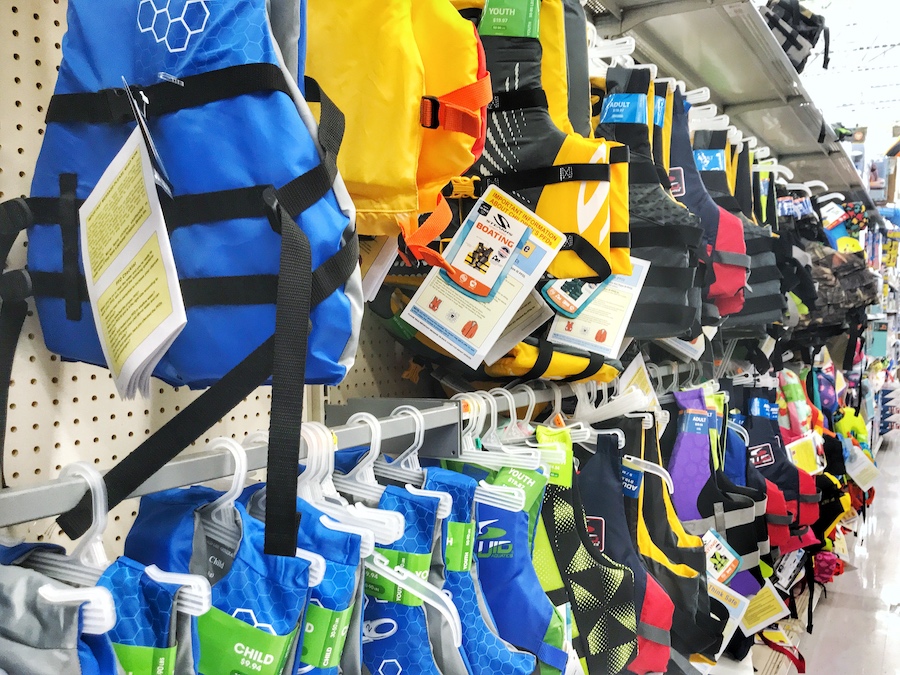
Getting Your Kid to Wear a PFD Without Complaining
First of all, PFDs should never be optional for children and children who complain still need to wear them. This is a rule on which you should never compromise. May you be blessed with a child who doesn’t mind wearing a PFD but if you aren’t, here are some tips that may help.
1. Start wearing PFDs as young as possible.
Children who grow up wearing a PFD are less likely to complain when they have to wear one.
2. Make sure the PFD fits right.
If your child finds the PFD too restrictive first check the fit. An ill-fitting PFD is not going to be as comfortable. If your child is in the correct size, look at different styles of PFDs. PFD technology has come a long way, and more comfortable designs that still do their job are available. Choosing the right size is one of the most important factors in choosing the right PFD.
3. Practice wearing the PFD at home.
Put your child in his PFD and let him walk around the house or yard while wearing it. I often let my son wear his PFDs, and he seems to get a kick out of it. When we head to the lake, he doesn’t bat an eye because he’s done it before.
4. Make EVERYONE wear their PFDs.
If the whole family is wearing a PFD, your child is much less likely to complain. If mom and dad or the big kids don’t have to wear one, they won’t want to either.
5. If all else fails, resort to bribery.
Even though you may feel like the lake trip is the prize, a child who is stuck in an uncomfortable PFD all day probably doesn’t feel the same. If all else fails and your child is still complaining, offer a bribe. Promise a toy or a treat so you can get through the day with fewer tears and more fun in the sun.
Set Water Rules and NEVER Waiver
I know when your child is kicking, whining, complaining and carrying on it is sometimes easier to give in. Where there are times when I think we do need to “cave,” when it comes to water safety, you should NEVER waiver. Your child’s life depends on it. Every year children tragically die in preventable water accidents. Make a vow to set your standards high when it comes to water safety. In the end, if your child is uncooperative and tantrums ensue, get out of the water and save it for a day when his mood is a little better!
Read Next
- Water Safety Tips for Toddlers and Children
- Snake Safety for Kids and Families
- How to Identify Poison Ivy
- How to Identify Snakes in the Wild | Snake ID Tips
Pin these tips for Choosing the Right PFD.
